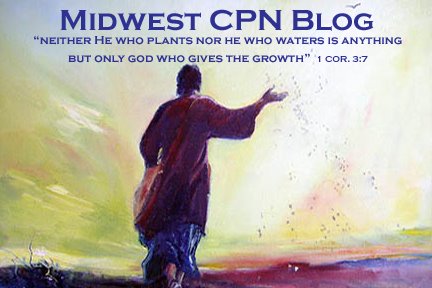From today's 9 Marks Blog comes this post from Jonathan Leeman. As I've noted before, I'm not a big fan of multi-site campuses and Leeman gives yet another reason why we should pause before jumping in. Good stuff.
-Doug
You won't believe it, but I found a page torn out of a church history book written one hundred years from now--in the year 2109. It comments on the present multi-campus "church" phenomenon. Here's what the page reads:
...the principle difference being caused by developments in technology. In the first millennium of the church’s existence, a heterodox bishop could corrupt the churches within his ambit in decades, maybe years. Even then his influence over other congregations was indirect, occurring through its leaders. In the twenty-first century, however, the bishops of so-called multi-campus churches could exert greater influence over entire congregations instantaneously via video-feed. No longer did the multi-campus pastor have to persuade the leaders of other congregations over years. He could project his own face before numerous assemblies week after week, and do untold damage in seconds.
Few anticipated how quickly these pragmatic, seemingly inconsequential shifts of polity would corrupt the churches throughout an entire nation. Ninety-six percent of evangelical Christians in America belonged to approximately one hundred multi-campus “churches” by 2030—the franchises swallowing up the mom-and-pop shops. Some of these franchises were originally orthodox. Yet many of them were not, which meant that the wolves now had a mechanism for multiplying their influence exponentially. Furthermore, the orthodox bishops were often replaced within a generation or two by less orthodox successors, in a way that unorthodox bishops are seldom, if ever, replaced by faithful men, simply by virtue of the kinds of trees the unorthodox pastor plants. The cumulative trajectory was downward, then, away from orthodoxy.
Gone were the days of the “ordinary pastor,” the man whose skills were not extraordinary, but sufficient to guide a ship with a hundred eternal souls safely through stormy waters to the distant shores. His sermons weren’t made for television. His music wasn’t good enough for the recording studio. Therefore, churches, feeling themselves entitled to professional excellence in all things, politely dismissed him, tore down the old buildings, built high-tech stadiums, and gave the league all-stars seven-year, multi-million dollar contracts.
Unawares, the leaders of the orthodoxy were all too happy to heed the siren call of pragmatism, believing the new mediums simply enlarged the reach of their orthodox pulpits. They failed to see how the medium would affect their message. Their congregations—plural—could no longer know them, and they could no longer know their congregations. Life and doctrine became separated, thus distorting the doctrine. Not only that, bigness was no longer the exception, but the norm, meaning that everyone became oblivious to the dangers peculiar to size.
A century which began with several bright stars—a proliferation of good literature, biblical preachers of the first order, even what some called a Reformed Revolution—ended darkly. Indeed, some of the century's best preachers, driven by the very desire to propagate the good message in their day, helped to undermine that message for the next generation by following the strategies of the marketplace. No one expected the devil to once more usher in the corruptions of the ancient Roman church through such a peripheral matter like church polity, even though he had done it before. (He always does his best work in the places where people forget to look.) Only now he did in decades what earlier he had taken centuries to accomplish. By the middle of the twenty-first century, the devastation was…
Tuesday, July 7, 2009
Subscribe to:
Post Comments (Atom)




No comments:
Post a Comment